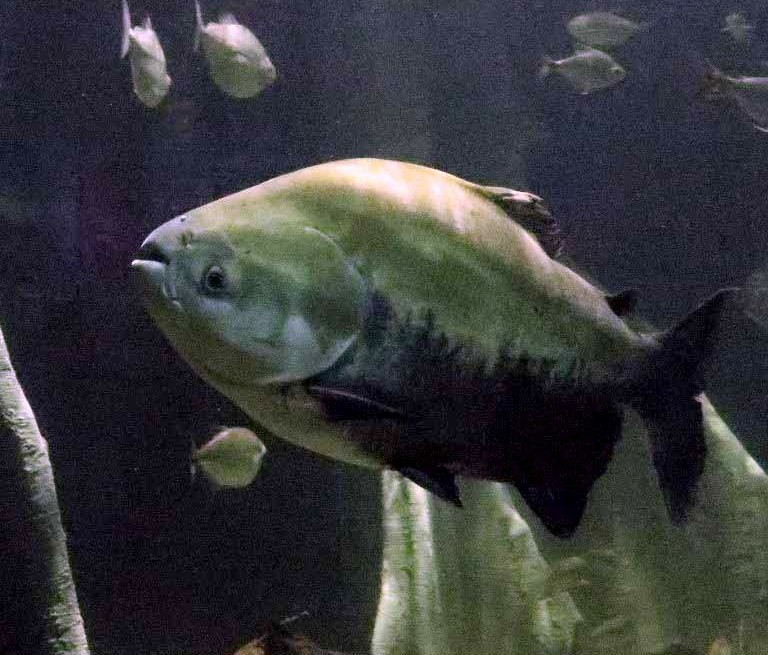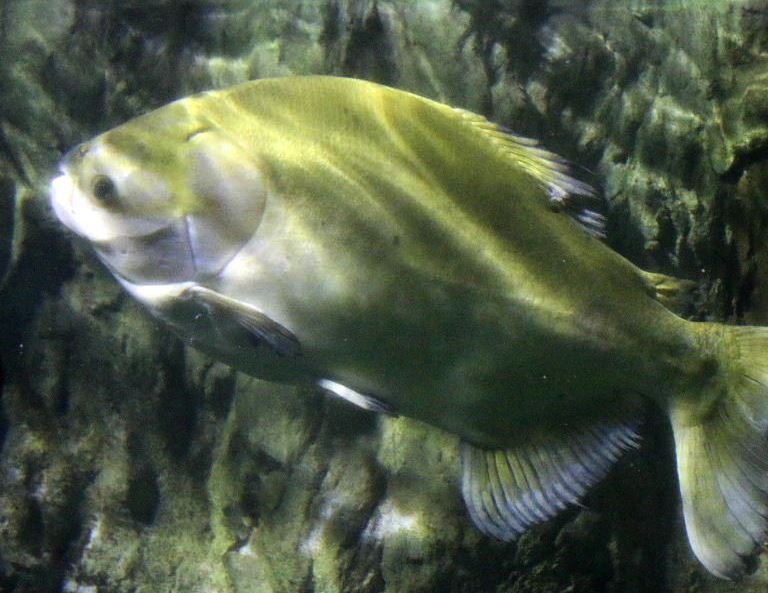Giant Pacu Colossoma macropomum


The Giant Pacu, also called Black Pacu, Black-finned Pacu and Tambaqui, is native to deep waters of
the Amazon and Orinoco basins. It is the second heaviest scaled freshwater fish in South America (after the Arapaima) at 44kg
and the third longest, reaching over 1 metre (3.5 feet) long.



It is the only species in its genus but species in Piaractus genus were previously included in Colossoma.
Synonyms include Piaractus macropomus, Myletes macropomus, Myletes nigripinnis, Colossoma nigripinne, Colossoma tambaqui.
The lower part of the body and lower fins are usually dark grey or black. The upper part can be brown, olive or yellowish, with fish living
in black water being much darker than those usually in white water.



Adults eat fruit, nuts and seeds, can crack Brazil nuts with their strong teeth and are important seed
dispersers. In the flooded season they swim among the trees looking for fruit and nuts. Juveniles are the same shape as
Piranhas, with which they are sometimes confused, but have much squarer teeth and are mainly vegetarian.



Black Pacu is a name also given to the huge but smaller Pirapitinga, Piaractus brachypomus, which can reach
some 88cm (2.9 feet) long. They can look similar and have similar habits and range. Main visible differences other than size are: a rounder
front shape (less pointed) for the Pirapitinga, a different gill/facial structure and a tiny rounded "adipose" (back dorsal) fin without rays,
in contrast to the spiny triangular adipose fin of the Tambaqui.

